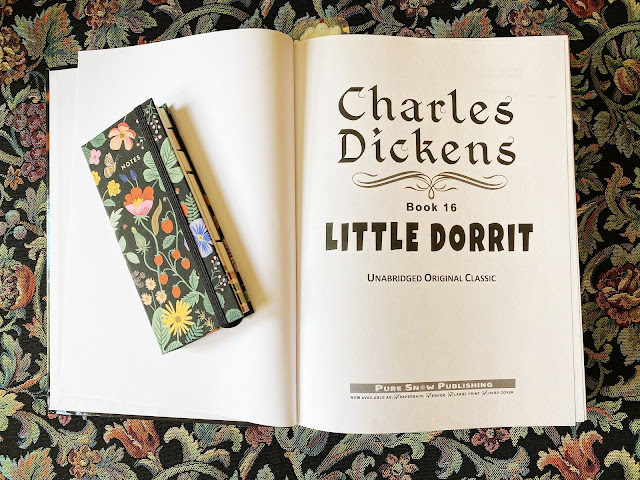A reread on an Elizabeth Gaskell classic for July 2025...

― Elizabeth Gaskell, Wives And Daughters
Elizabeth Gaskell’s fifth and final novel, Wives And Daughters begins in the small English town of Hollingford in the early 1820/30s and focuses primarily on the bright and loving Molly Gibson. It was first released in serial form in the Cornhill Magazine from August 1964 to January 1866 and released as a book in 1866 by Smith, Elder And Company.
The Cornhill Magazine was a monthly literary journal which peaked in circulation under editor William Makepeace Thackery in the 1860s. It specialized in serializations of new and current novels and articles of interest on many differing subjects to interest the Victorian reader of the time and was a rival publication of Dickens’ All The Year Round. Works included in The Cornhill Magazine included such important novels as Washington Square by Henry James, Far From The Madding Crowd by Thomas Hardy and Wives And Daughters by Elizabeth Gaskell.
“I won't say she was silly, but I think one of us was silly, and it was not me.”
― Elizabeth Gaskell, Wives And Daughters
The town of Hollingford was richly representative of a common country community and was based upon the real life town of Knutsford in Cheshire where Elizabeth Gaskell spent her childhood. Knutsford was a place that had provided a wealth of stories and characters for Elizabeth Gaskell, including her much beloved Cransford stories - Mr. Harrison’s Confessions, Cranford, Round The Sofa and My Lady Ludlow.
Gaskell’s Hollingford has a large caste of characters - its respected resident aristocracy in Earl & Countess Cumnor, its respected country doctor, its conservative spinsters and its small shops where news is exchanged and not-so-current fashion items are purchased. The rural life lives closely and comfortably with town life and everyone moves on with the secure sense that others have lived just so for many years before. In Hollingford we have a wonderfully deep and accurate sense of small town life during Victorian times - the old ways versus encroaching change and the class system and its changing sensibilities.
“How easy it is to judge rightly after one sees what evil comes from judging wrongly.”
― Elizabeth Gaskell, Wives And Daughters
There is also much to enjoy in Molly’s story - banter between herself and her country doctor father, her affectionate relationship as a motherless young woman with Mrs. Hamley, the squire’s wife and her eager anticipation of a relationship with a new step-sister. There are also the many moments in life for her that challenge her temper and her best feelings of kindness. This book may be set almost 200 years in the past - but people ring true and current. The language may be more formal. Social mores may be more strict. But there are the same fears and hopes that are familiar to us all. And the pitfalls that beset them are not all that different.
“But fate is a cunning hussy, and builds up her plans as imperceptibly as a bird builds her nest; and with the same kind of unconsidered trifles.”
― Elizabeth Gaskell, Wives And Daughters
Elizabeth Gaskell does what she does best in Wives And Daughters. We have a fertile storyline that touches on the joy of the common person and presents both the kindnesses and oblivious selfishness of the upper class aristocracy and the inter-house competitiveness that they held for each other.
“All sorts of thoughts cross one's mind—it depends upon whether one gives them harbour and encouragement”
― Elizabeth Gaskell, Wives And Daughters
While writing Wives And Daughters, Gaskell passed away suddenly in 1865 after suffering a heart attack land so she left her last novel as an incomplete work. Gaskell’s editor, Frederick Greenwood - knowing what Gaskell was planning to write - completed the novel.
There is much to discuss in the lengthy but enjoyable Wives And Daughters. Start reading now! We will meet to discuss this last work of Elizabeth Gaskell on Saturday, July 12th, 2025 over an early Summer Book Lunch.
“Pooh! away with love! Nay, my dear, we loved each other so dearly we should never have been happy with any one else; but that's a different thing. People aren't like what they were when we were young. All the love nowadays is just silly fancy, and sentimental romance, as far as I can see.”
― Elizabeth Gaskell, Wives And Daughters





























